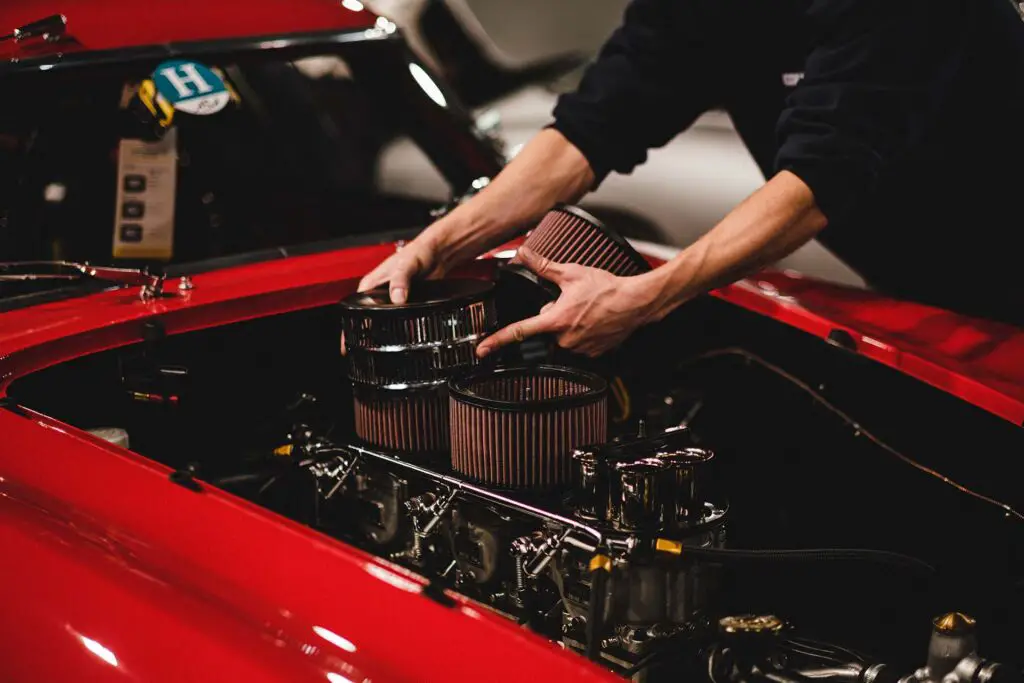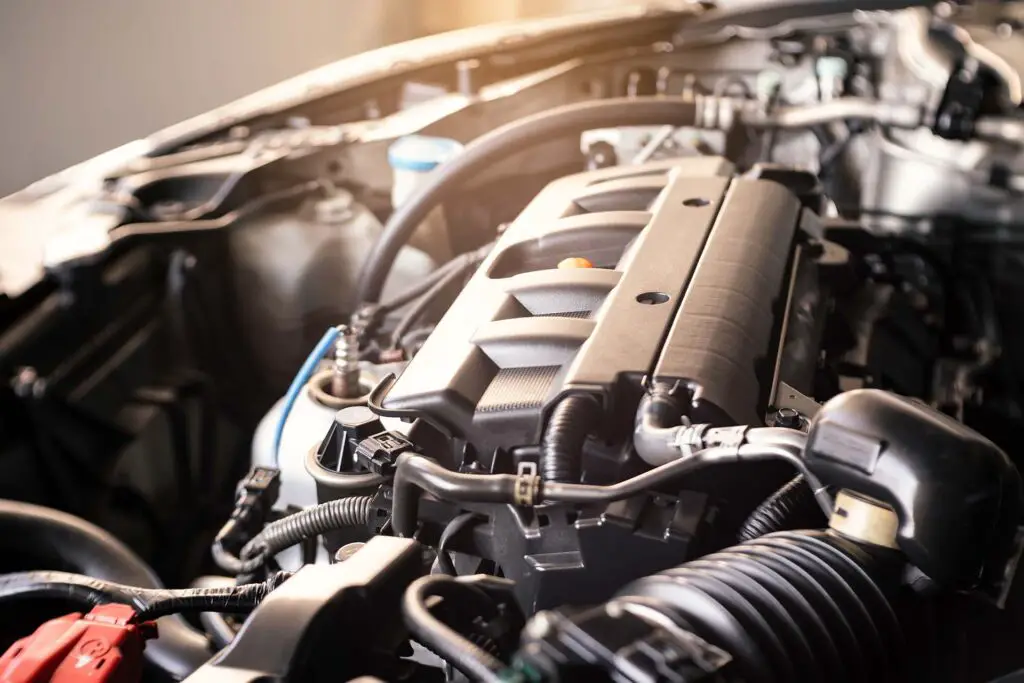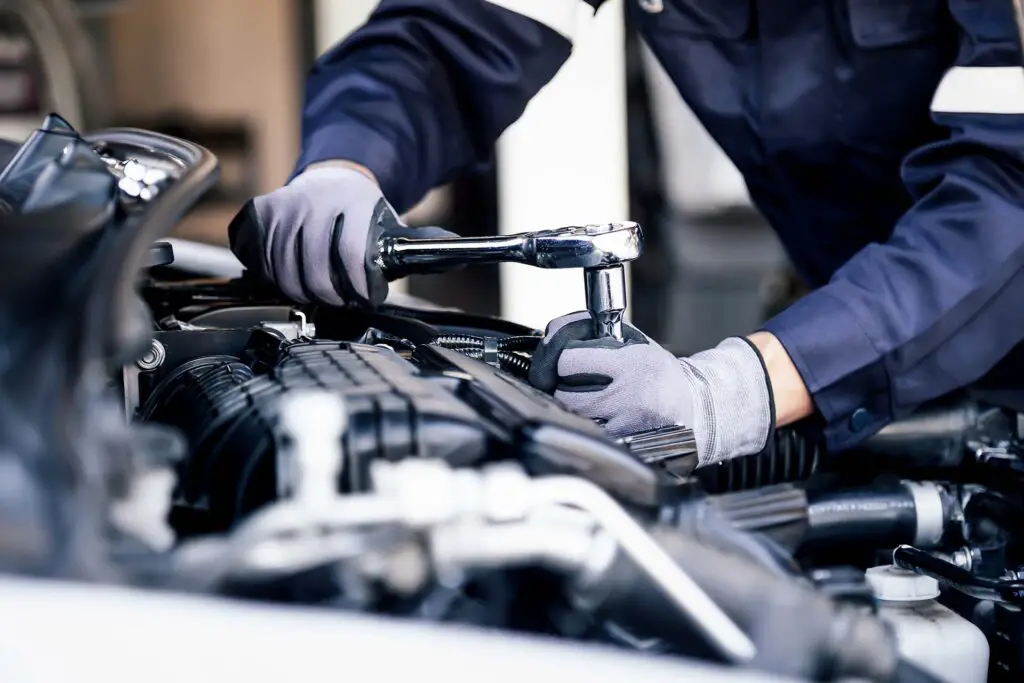Have you been feeling the itch to get your hands dirty and give your four-wheeler a little TLC? Well, learning how to clean a throttle body is a great way to show your precious ride the maintenance it deserves but also to better the overall performance. Don’t worry if you’re not familiar with it – this guide has got you covered.
It’s best to clean this component using specialized products and gentle tools to scrub off deposits. It’s possible to do this without removing the part, but a thorough job is best achieved by taking it out. After cleaning, start the vehicle, monitor its performance, and go for a short drive to ensure everything is smooth.
Why Is the Throttle Body Important?
The throttle body is a key component in your vehicle’s air intake system, controlling the amount of air flowing into the engine. Think of it as the gateway that determines how much air mixes with the fuel as you cruise around. This balance is crucial for optimum combustion and performance.
Over time, this vital component can accumulate grime and gunk, which in turn can cause various performance issues. So, figuring out how to clean a dirty throttle body is a great way to keep everything running smoothly and avoid costly repairs down the road. But before we get into the nitty-gritty details of this task, let’s see what you can expect if there’s a blockage in this vehicle component.

What Are the Symptoms of a Dirty Throttle Body?
So, we’ve touched on how this grubby bouncer in our vehicle’s air intake system can throw off the groove of the mechanisms under the hood. But how can you spot that this is happening? Here are the most common telltale signs that something’s amiss:
Rough Idle or Stalling
When your engine isn’t behaving consistently, especially during idle, it’s a clear indication. A dirty regulator can impede the optimal air-fuel mix, leading to the engine occasionally stalling or exhibiting rough idle behaviors.
Decreased Fuel Economy
If you find yourself visiting the gas station more frequently than usual, take note. An inefficient air regulator can cause the engine to consume more fuel, impacting your vehicle’s mileage and, sadly, your wallet, resulting in a significant rise in car expenses.
Reduced Engine Performance
A vehicle should respond swiftly to the driver’s commands, no matter if you’re navigating traffic in one of the cities with the worst drivers or cruising down the famous routes in the US. However, if there’s a sluggish feel during acceleration or when tackling inclines, it’s often due to irregular airflow affecting engine efficiency.
Unusual Sounds From the Engine
A healthy engine has a consistent rhythm. Any unusual humming or whistling sounds are not your ride’s way of communicating with you – these noises can signify a disrupted airglow, hinting at a possible blockage or dirt accumulation.
Delayed Response Time
When there’s a noticeable lag after pressing the gas pedal, it’s concerning. This delay can stem from an uneven air-fuel mix, causing momentary hiccups in the engine’s responsiveness, and should be addressed as soon as possible.
Here Are the Required Materials and Tools
I know what you’re probably wondering – how much does it cost to clean a throttle body? Well, having it professionally done usually ranges between $100 and $250. But here’s a thought – why not roll up your sleeves and try to tackle this task yourself?
With the right tools and a pinch of determination, you can save those extra bucks for another day. Better yet, you’ll never worry about how much to clean a throttle body again – you’ll have the needed skills to deal with the problem yourself.
So, let’s get familiar with the tools and materials you’ll need to get the job done:
| Equipment | Purpose |
| Throttle body cleaner | Specially formulated to break down dirt and grime |
| A soft cloth or rag | For wiping off the cleaner and any loose dirt |
| A soft brush | You can use an old toothbrush to scrub off the stubborn dirt |
| Screwdrivers | For removing clamps or screws holding the unit in place |
There Are Plenty of Quality Cleaners on the Market
Cleaners such as the NORTHWEST ENTERPRISES Ultrasonic Solution or the CRC MAF & Throttle Body Cleaner are specifically designed to break down the gunk without harming the delicate parts of the unit. Some of them might have a heftier price tag, but these solutions will serve you well for miles to come, and certain products are suitable for other engine components as well.

Don’t Forget About the Safety Precautions
The cleaners we’ve just mentioned, while excellent for the task at hand, contain chemicals that aren’t exactly friendly to our skin and eyes. Hence, it’s a wise idea to wear safety glasses and gloves throughout the process.
Also, always remember to work on a cool engine. An overheated one is not just difficult to work on but can also lead to accidental burns. And since we’re on the topic of air quality, ensure you’re in a well-ventilated area. It not only keeps those chemical fumes at bay but also makes the whole experience much more pleasant.

How to Clean a Throttle Body – Steps You Should Take
Ready to dive into the heart of the matter? Knowing how to give this crucial component of the air intake system a thorough scrub can be invaluable. So, let’s dig into the how-to’s and start this DIY task the right way.
Accessing and Inspecting the Component
Often sandwiched between the air intake filter and various pipes, our targeted component is best approached with a remove-and-dismantle mindset for the most thorough cleaning job. Here’s the roadmap to getting there:
- Disconnect the negative battery terminal – cutting power by disconnecting the car battery ensures that you won’t accidentally turn the engine on or get shocked while working,
- Remove the air intake hose – you might need a screwdriver to loosen any clamps holding the hose in place,
- Disconnect electrical connectors – there might be wiring plugs that give power and signals to the component, so unplug any present to ensure nothing gets damaged during the cleaning process.
Once you’ve gotten clear access to the component, it’s time for a close-up inspection. Look out for any visible layers of grime, accumulated dirt, or those notorious carbon deposits that can hinder performance. While you’re at it, also keep an eye out for any signs of wear or damage.
Cleaning the Component Thoroughly
Here’s a step-by-step guide to get this vehicle part gleaming:
- Begin by lightly spraying the cleaning agent onto a cloth or directly onto the plate and chamber,
- If you come across stubborn deposits that don’t come off with a wipe, use your soft brush,
- No matter what tool you’re using, gently scrub the area to avoid any damage,
- Once all the deposits are removed, use your cloth to wipe the component clean, ensuring no residue is left behind,
- Before reassembling or starting your vehicle, give the component some time to air dry.
Reassembling the Throttle Body
After the meticulous cleaning process, it’s time to put the pieces back together. Begin by reconnecting any electrical connections you’d previously detached. Next, ensure the air intake hose is securely reattached. And, as the final step, always remember to reconnect the negative terminal of the car battery to restore power.
How to Clean a Throttle Body Without Removing It
Sometimes, you might not have the time or resources for a complete disassembly. In such cases, simply spray a cleaning agent into the component, and use a cloth or old toothbrush to clear away any grime. To access the inner section, you can have a buddy press down on the gas pedal. This action will open the butterfly valve for you. If you’re working solo, gently press the valve open, but be cautious with your fingers as you maneuver around the inside.

What You Should Do After the Cleaning Process
After putting in the elbow grease and ensuring everything’s in its right place, kick-start the vehicle and let it idle for a few moments. This will allow any residual cleaner to burn off and stabilize the system.
Be mindful of how your vehicle responds during this phase. Take note of any unusual behavior or warning lights popping up on your dashboard. Once you’re convinced things are ticking along nicely, take a little spin around the block. This short trip confirms that your efforts have paid off, and the four-wheeler is running smoothly.
How Often Should You Clean the Throttle Body
Though regular upkeep is essential, you don’t need to get into this routine too often. Typically, a cleaning session every 75,000 to 90,000 miles should suffice. However, if you own an older used vehicle that’s seen a lot of road, you might find yourself doing it more frequently. And remember, when in doubt, your trusty vehicle manual can provide guidance tailored to your specific make and model.
Benefits of a Clean Throttle Body
Giving this component a good scrub isn’t just about maintaining appearances under the hood. Keeping it clean offers tangible benefits that every driver will appreciate:
Enhanced Fuel Efficiency
When this component is clean and free of obstructions, air flows more smoothly into the engine. This optimal air-fuel mixture results in better combustion, translating to fewer trips to the fuel pump. Over time, this not only saves on ownership costs but also contributes to a more environmentally friendly ride.
Improved Engine Response
A clean air intake system ensures that your engine gets the right amount of air whenever you step on the gas pedal. This translates to quicker and more accurate responses, especially during rapid acceleration. You’ll find that your vehicle feels more agile, especially when overtaking or merging onto highways.
Longer Lifespan of Engine Components
Accumulated grime and residues can wear down various engine parts prematurely. By making sure that each and every part remains clean, you minimize the chances of these contaminants entering the engine, thus promoting longevity. Your engine and your wallet will thank you in the long run.
A Clean Engine is a Happy Engine
In a nutshell, giving that throttle body a little TLC isn’t just about sprucing up the inner workings of your vehicle. It’s about ensuring that every drive is smooth, efficient, and free from hitches. So, next time you pop the hood, think about giving your engine the spa day it truly deserves – it will be thankful for miles to come.
Frequently Asked Questions About Throttle Body
Is It Okay to Use Any Cleaning Solution for the Throttle Body?
No, it’s best to use a cleaner specifically designed for throttle bodies. Using the wrong type of cleaner might damage the component or leave behind residues that can impede its performance.
Is There Any Way to Prevent the Throttle Body From Getting Dirty Too Quickly?
Regularly replacing your air filter and ensuring that the PCV system is functioning properly can help keep contaminants away from the throttle body, extending the time between necessary cleanings.
Will Cleaning the Air Intake System Improve Horsepower?
Cleaning it can restore lost power due to obstructions or inefficient airflow. While it might not add extra horsepower beyond the engine’s original specs, it can help your engine reach its full potential by ensuring optimal airflow.








